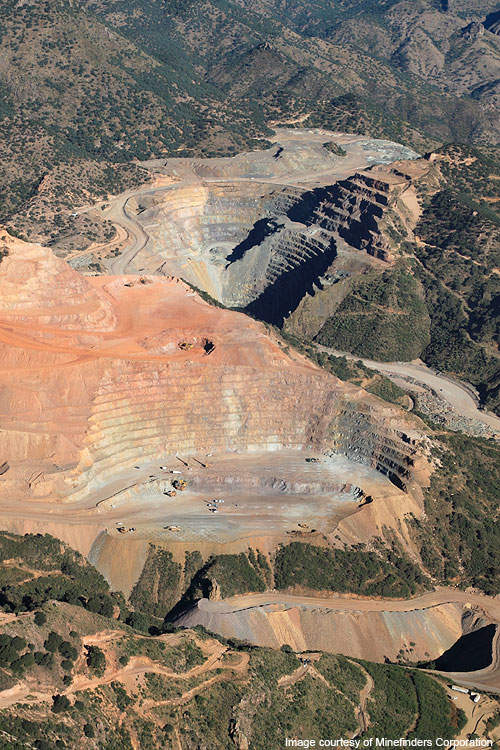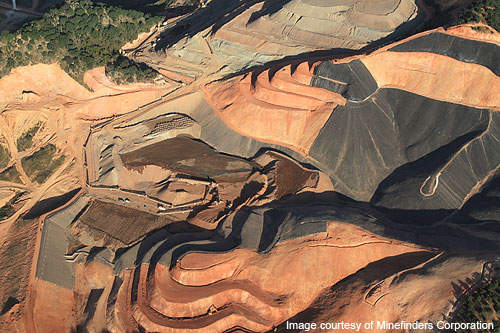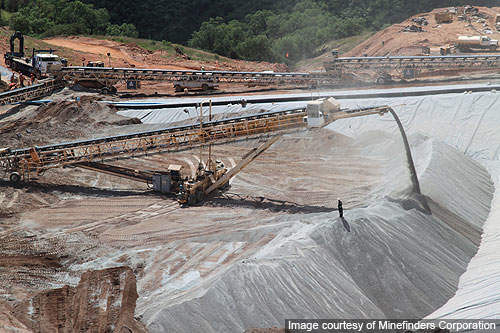The Dolores gold and silver mine is located in the Sierra Madre Occidental mountain range about 250km west of Chihuahua in northern Mexico. The mine was originally owned and operated by Minefinders Corporation. In March 2012, Pan American Silver Corporation became the owner and operator after acquiring Minefinders Corporation.
The open-pit mine started production in November 2008 with commercial production commencing in May 2009. The mine is expected to produce 80,000 ounces (oz) of gold and four million oz of silver per year during its estimated mine life of over 17 years.
In 2010, the mine produced 1.22 million oz of silver and 56,000oz of gold. In 2011, production increased to 3.57 million oz of silver and 74,400oz of gold. The mine is expected to produce 2.8-3 million oz of silver and 50,000-53,000oz of gold in 2012.
Reserves
The Dolores mine is estimated to contain 107.64 million tonnes (Mt) of proven and probable reserves graded at 0.58g/t of gold and 33.1g/t of silver. Proven reserves are estimated at 62.43Mt graded at 0.62g/t of gold and 34.2g/t of silver. The estimated probable reserves are 45.21Mt graded at 0.53g/t of gold and 31.6g/t of silver.
Geology and mineralisation
The mine is a low- to medium-sulfidation epithermal system contained in the andesite volcanic rocks. The volcanic rocks are of the tertiary age lower volcanic formation. Mineralisation occurs in a steeply-dipping structure in fractures and stock works which are contained within and next to latite dikes.
Mineralisation occurs in an area which is 4,000m long and 1,000m wide and extends 700m vertically. Gold and silver mineralisation is contained in veins, silica stockworks, breccias and replacements.
The majority of the deposits are found in places where feeders widen into breccias and stockworks are a few hundred metres wide to form halos around the primary structures. Mineralisation is limited to the lowermost segment of the latite flows and tuffs which are present over the andesitic host rocks.
Mining
Mining is carried out at Dolores through conventional open-pit techniques. Mining activities commenced in October 2007 at the north end of the mine.
The mine is equipped with 15 100t mining trucks, tracked and wheeled dozers, two shovels and three loaders. It also features drills, two water haulers, a high angle conveyor, graders and other equipment.
Ore processing
Ore extracted from the mine is trucked down to the primary and secondary crushers. Screens then remove oversized ore and send it through the tertiary crusher. The ore is then transported by an overland conveyor to the dust reduction tower and fine ore stockpile.
The Dolores Mine is equipped with a lined heap leach pad for processing the ore. The ore is sent to the leach pad through the high angle conveyor. The leach pad is radial stacked to prevent compaction and enable proper leaching of the ore.
Run-of-mine ore is placed on the leach pad and solution is run through it. The solution leaches the gold and silver from the ore.
The resultant solution is processed at the Merrill-Crowe plant to produce gold-silver doré.
Over 1.8Mt of ore had been stacked on the leach pad by March 2010. The leach pad is the first of five phases planned for the mine. A tear was discovered in the Phase 1 leach pad in June 2010.
Remedial work was started to repair the tear which resulted in a decrease in gold and silver production.
The Phase 2 leach pad was brought into full production and leaching commenced in September 2010. Non-leached ore from the Phase 1 leach pad was moved onto Phase 2 leach pad.
The Phase 2 leach pad provides sufficient capacity for three years of production.
Future developments
An 18,000m drilling programme is currently being carried out at the mine. The programme is exploring the possibility of developing an underground mine in addition to the current open-pit mine.
The drilling activities led to the discovery of high grade gold-silver mineralisation about 250m-400m north-east of the mine in August 2010. Results from the drilling activities support the development of an underground mine in the future.
There is also a plan to add a 6,500t/d mill and flotation plant at the Dolores mine to process high grade ore. The new mill will treat underground ore and boost production capacity. A pre-feasibility report supported the addition of the mill.
In April 2010, the Minefinders’ board of directors granted approval to carry out a detailed feasibility study for the mill. The mill development project has been put on hold by the new owner Pan American. The company plans to carry out a scoping level study in 2012 to produce a development strategy for the mine.






